#sun yat sen
Text

Happy birthday, Sun Yat-sen! (November 12, 1866)
The first President of the Republic of China and a highly-influential figure in both the People's Republic of China and Taiwan, Sun Yat-sen is regarded as the founding father of modern China due to his early leading role in the Kuomintang. An intellectual, Sun was one of the early leaders of resistance and rebellion to Qing imperial rule, and took a leading role in the first uprising in Guangzhou. Sun would continue his revolutionary activities, both in exile and campaigning in China itself, until the revolution finally came in 1911. Sun's forces could not maintain control, however, as China splintered into warlord factions. Sun reorganized his forces in the south of China, allying with the Communists as he planned the Northern Expedition. He would not live to see the struggle through, as he died of cancer in 1925. Sun's legacy endured, however, and his Three Principles of the People remain an influential piece of Chinese political philosophy.
"I am the one who will crush the Qing utterly. With the power of sun and moon I will smash through the boundaries of Helanshan pass. With fire and fury I shall come to the city of the Nanluo kings, and the might of the Yanhuang will rise again."
78 notes
·
View notes
Text
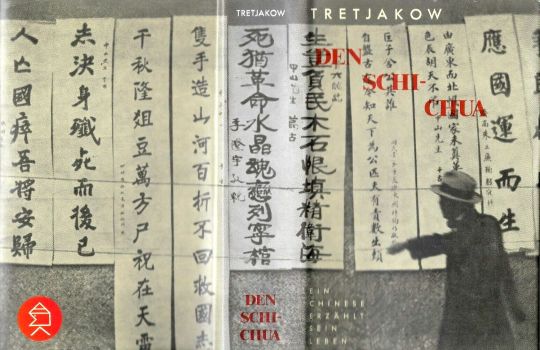
John Heartfield
- Cover for Den Schi Chua
1932
The cover photograph is from Dr Sun Yat-sen's elegiac couplets, 1925.
18 notes
·
View notes
Text
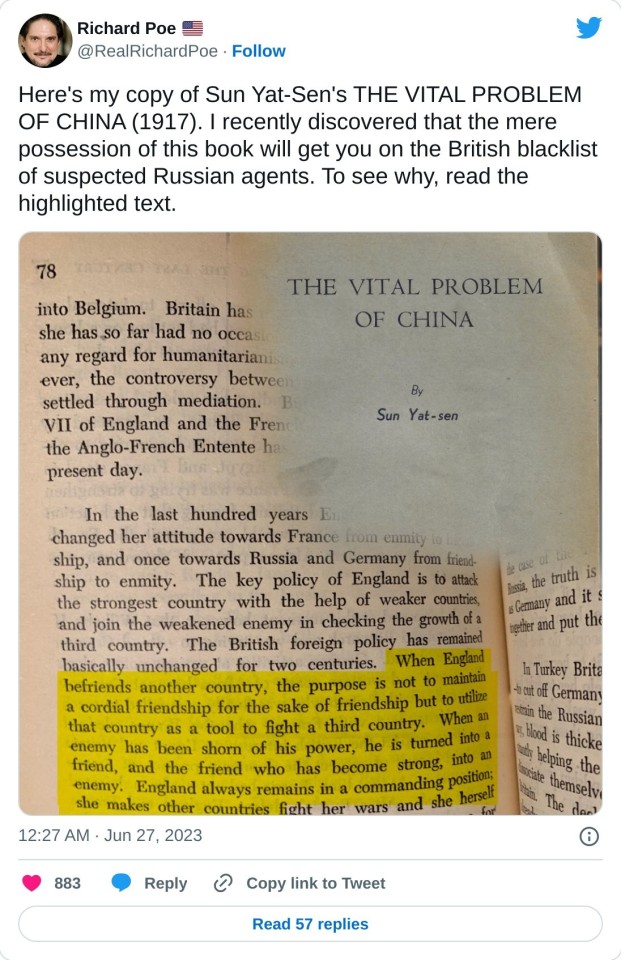
43 notes
·
View notes
Text

Feibo Girl
For much of China, the phrase “Roaring Twenties” may have a less jovial meaning. While the U.S. is in the middle of its Jazz Age, China is in the middle of its Warlord Era. The end of the Qing Dynasty has seen China is split into waring fractions called cliques, with those living in the country suffering the worst violence. It’s an especially dangerous time to be a woman.
Fortunately, the Fa family lives in Shanghai, where the wars usually aren’t as close, and women’s rights are blossoming. Heavy with Western influence, the neon-lit city is “the cosmopolitan Paris of the East.” It’s an even blend of old and new. Ancient-looking ships sail past modern skyscrapers, and pedestrians push wooden carts next to buses and trollies. [Link] It’s a good thing the women of Shanghai have more opportunities, because the warlords impose high taxes on their people, and ill veteran Fa Zhou can no longer work. His wife brings in some money sewing trendy qipaos, but it’s not enough to cover necessities and the warlord’s taxes. So Mulan takes it upon herself to save her family from financial ruin.
She first tries getting a job at a cabaret called the Lucky Cricket. Her mother and grandmother help give her the makeover needed to transform Mulan into a winking Feibo Girl—a Chinese flapper. Then, hesitantly, Mulan bobs her hair using a long, sharp family heirloom. But despite her best efforts, Mulan’s clumsiness clashes with the cabaret owner’s inability to listen, resulting in a show that entertains everybody for all the wrong reasons. While the patrons laugh wildly and snark that the performer is “on fire,” the literally inflamed owner loudly fires Mulan.
Ashamed, Mulan sits in the family’s garden, deep in thought. Near an opened window, Grandma belts out to American jazz on the radio. Grandma’s dance session is interrupted by an announcement from Dr. Sun Yat-Sen, a political and military leader seeking to reunite China and put an end to the warlords. He is recruiting soldiers for what he calls “the Northern Expedition.” Mulan—athletic, strategic, crafty, and often mistaken for a boy—perks at the announcement.
Since Mulan has already been bobbing her hair and binding her breasts per Western flapper fashion, all she really needs is a fake name. She enlists in the National Revolution Army under the alias “Ping.” Joining her are a tiny dragon sent by her ancestors, and the mascot from the Lucky Cricket. Training with both swords and machine guns, “Ping” initially causes some mayhem (thanks in no small part to pranks from her comrades). But by the time the troop boards the train out to their first battle, Ping is one of the most promising recruits Captain Li Shang has ever seen.
Control of the railways is crucial to the warlords’ power, and most battles are fought near tracks. While squeezed onto the train and speeding through the country, the soldiers’ songs about girls worth fighting for are punctuated with harrowing scenes of massacred villages. They pull to a stop at a town that’s been burned to the ground, where Li Shang’s father lies among the dead. This is not the work of just any warlord. This was the infamous “Dog-Meat General,” Zhang Zongchang. A particularly ruthless and incompetent ruler, Zongchang is the most feared of China’s warlords. Mulan’s ingenuity leads to the troop’s first major victory, when she creates an avalanche that buries Dog-Meat’s most important railroad—with most of his troops still onboard.
While in the infirmary, Mulan’s true sex is revealed. At first, Shang and the other men don’t know how to feel. But it turns out that a woman may be exactly what they need in their next move against Zongchang. The Dog-Meat General has a harem of 30-50 women, who are assigned numbers because he can’t remember their names. And he forgets their numbers. The guy is just asking for this infiltration. Mulan’s experience at the Lucky Cricket cabaret is now inviable. She drills the men on how to dress and act like attractive ladies, and the operation is soon underway.
Ling, Yao, and Chien Po giggle behind their fans as Zongchang boasts of his supposedly enormous masculinity. Meanwhile, Mulan and Shang quietly move to free the captured Dr. Sun Yat-Sen. Along the way, they rescue another prisoner, from Zongchang’s kitchen; the Dog Meat General’s name has several possible meanings, but he does indeed enjoy certain canine dishes. Mulan saves an energetic pup from the butcher, and names him Little Brother. Though not the brightest pooch in the word, Little Brother sniffs out Sun Yat-Sen’s holding cell.
Back at the harem, it’s time for the next phase of the plan. This requires the drag-queens to take out some guards, which means another distraction is needed. Luckily, the Dog-Meat General also fancies himself a poet. Mushu and the cricket take over the job of distracting him, by claiming to be his new typists. Cri-Kee hops from ink to paper, taking down what the Dog Meat General dictates, while Mushu observes. The finished poem reads:
You tell me to do this,
He tells me to do that.
You're all bastards,
Go fuck your mother.
"Poem about bastards" by Zhang Zongchang[b]

Instead of applause, this poem is followed by an explosion of fireworks detonating all around his military base. Mulan has finally destroyed Zongchang’s army beyond salvaging. The Dog-Meat General himself is killed by an officer avenging his father; Li Shang blows his smoking pistol with satisfaction. Shang follows Mulan back to Shanghai, where they begin a new life together in a unified China.
AN: This picture came out looking very similar to the design that Jacquelynn Harris gave Mulan in her Disney flapper series. I assume this is because we both based the outfit on Mulan’s matchmaker attire, and her hair on actress Anna May Wong. The background border is clipart.
On the story: In the old version of my Disney flapper series, I set all the stories in the U.S. Someone suggested that I look at non-Western fashion from the era, and I dismissed the idea, ignorantly assuming that the Roaring Twenties only happened in the West. This time around, I decided to check if anything interesting was happening in China in the 1920s…and wow, what a rabbit hole! So many things fit so perfectly with Disney’s version of Mulan, especially with that bizarre Zongchang character. I’d never personally create an Asian villain with “dog meat” in his name, but the Dog-Meat General is one of those “can’t make this sh-t up” historical figures. Of course I took liberties with how the history actually played out, as Disney often does; but all of the personal traits described, from the numbered harem to the literal dog meat to that poem, were real. And yes, he was killed by an officer avenging a relative.
To anyone so inclined, here are a couple of incredible time-capsul videos from China in around this time period.
Up the Wangpoo River to Shanghai (1920s)
A video with sound and color from 1929
#prohibition princesses#disney flappers#fa mulan#mulan#1920s#roaring twenties#feibo girl#flapper#china#chinese#chinese new year#qipao#cheongsam#sun yat sen#zhang zongchang#dog-meat general#chinese history#disney princess#digital art#fan art#art#roaring twenties au#feather boa#dragon#year of the dragon#shanghai#cabaret#warlord era#warlord#asia
11 notes
·
View notes
Text

A rare image of the three flags of the Republic of China together. At center, the first national flag (see Image:Flag of the Republic of China 1912-1928.svg), at left the army flag (see Image:Chinese-Army-Wuhan-Flag-1911-1928 dots19.svg), and at right the Sun Yat Sen flag (now the flag of Taiwan) (see Image:Flag of the Republic of China.svg).
Underneath the picture is the slogan "Long live the republic!" (共和萬歲, in traditional right-to-left single-character column order).
Dated prior to the 1930 or 1929
Found on page 1 of Made in China by Reed Darmon, Chronicle Books LLC, 2004, ISBN: 0-8118-4202-9, www.chroniclebooks.com
Source: Wikimedia Commons
#graphic#art#woodblock#Wuchang Uprising#Republic of China#military#Sun Yat Sen#Xinhai Revolution#1920s#1910s#Tongmenghui#Wikimedia Commons#Hubei Military Government#20th century#Taiwan#nationalism#republicanism#China#Chinese#history#flags
8 notes
·
View notes
Text
To understand is difficult; to act is easy. Sun Yat-sen
New Post has been published on https://china-underground.com/2019/08/24/to-understand-is-difficult-to-act-is-easy-sun-yat-sen/
To understand is difficult; to act is easy. Sun Yat-sen

Meaning: It’s important to think and try to understand before acting.
Origin: “Dr. Sun Yat-sen, father of the Chinese Republic, realized the detrimental effects of this kind of philosophy. He said, ‘To understand is difficult; to act is easy.'” Great Britain and the East, Volume 61, Issue 2
To understand is difficult; to act is easy.
Sun Yat-sen (1866-1925, 孫逸仙) known in China as Sun Zhongshan (孙中山, 中山, Sūn Zhōngshān) was a Chinese politician, considered the father of modern China and one of the most important Chinese revolutionaries, founder of the Kuomintang party, among the first to propose the overthrow of the Chinese Empire (at that time supported by the Qing dynasty) and to consider the problem of democracy.
#SunYatSen
3 notes
·
View notes
Text

"CHILDREN OF THE FOUNDER OF THE CHINESE REPUBLIC," Toronto Star Weekly. August 10, 1912. Page 12.
---
THE children of Dr. Sun Yat Sen, the founder of the Republic, as they appeared on their arrival in San Francisco on July 27th. They have be sent to America by their progressive father, who wishes them to receive a American education. From left to right: Miss Sun On, Miss Sun Yuen, M Sun Fo and his bride..
#sun yat sen#chinese republic#san francisco#xinhai revolution#chinese nationalism#revolutionary party#chinese republicanism#famous children#chinese revolution
1 note
·
View note
Text
La Chine a commémoré le 157e anniversaire de la naissance de Sun Yat-sen
Une cérémonie a eu lieu pour commémorer le 157ème anniversaire de la naissance de Sun Yat-sen et une statue a été érigé au Japon
Une cérémonie a eu lieu le 12 novembre pour commémorer le 157ème anniversaire de la naissance de Sun Yat-sen, considéré en Chine comme “un grand héros national, grand patriote et grand précurseur de la révolution démocratique de la Chine”.
Né en 1866 dans la province méridionale du Guangdong, M. Sun est connu pour son rôle prépondérant dans la révolution de 1911, qui a renversé la dynastie…
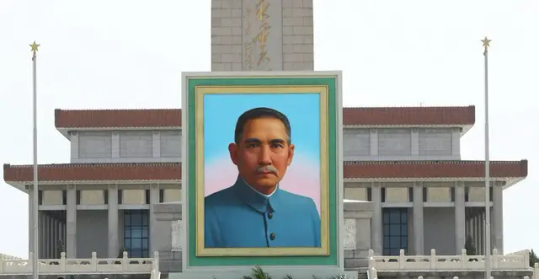
View On WordPress
0 notes
Text

The following are the contents of the article, including a description of the infobox, listed in succession.
(title of infobox in Chinese and Manchu languages)
Chinese Imperial Air Force (English)
中華帝國空軍 (Hanzi)
Chung-hua Ti-kuo K'ung-chün (Wade-Giles, the most widely used Chinese romanization system in this timeline)
(Below is the name in Manchu script, it only renders sideways here)
ᡩᡠᠯᡳᠮᠪᠠᡳ ᡤᡠᡵᡠᠨ ᡳ ᠠᠪᡴᠠᡳ ᠴᠣᠣᡥᠠ (Manchu)
Dulimbai gurun-i Abkai Cooha (Manchu romanization)
Emblem of the Chinese Imperial Air Force:
Symbol consisting of the roundel with a blue-green-white-red dragon flying around the central red sun, vertical red and yellow banners with the name of the air force in white Hanzi and Manchu script, two outspread white bird wings, and the red imperial crown of the Great Qing Emperor
Founded: 10 August 1910; 113 years ago
(as Army Flying Corps)
25 December 1929; 93 years ago
(as current service)
Country: China
Type: Air force
Role:
Aerial warfare
Airborne forces
Air defense
Size: 300,000 active personnel (2023)
4,000+ aircraft (2023)
Part of: Chinese Imperial Military
Headquarters: Peking (this spelling remained popular in the English-speaking world)
Motto(s) 盡忠報國
English: "boundless loyalty to the country"
(the text of Yue Fei's famous tattoo)
Colors: Blue, yellow, red
(a medium cerulean blue, a slightly warm yellow, and a bright cherry red)
March:
Quick: Dragon Aviators' March
Slow: Five Thousand Years
Anniversaries: Air Force Day (14 August)
Aviation Day (10 August)
List of Engagements:
Late Kuang-hsü Crisis
(Second Canton Revolt)
(Wu-ch'ang Rebellion)
(Hatchet Gang Rebellion)
Sino-German War
First World War
Russian Civil War
(West Siberian Intervention)
Warlord Era
(Imperial Protection War)
(Yün-Kwei War)
(Southern Expedition)
(Sinkiang Campaign)
Outer Mongolia Insurgency
Second Sino-Japanese War
Second World War
Chinese Civil War
(Tai-wan Strait Crisis)
Korean War
(Yalu-Tumen Intervention)
Sino-Indian War
(Battle of Bhutan)
Tibet Uprising (1959)
(Operation Wind Shadow)
Third Indochina War
(Operation Phoenix Eye)
Spratly Islands Conflict
Indonesia-Malaya War
(Operation Celestial Spear)
Uzbekistan War
(Operation Black Tortoise)
Website: (Official website link)
Commanders:
Commander-in-Chief: Jui-wen Emperor (era name 睿文, means "Forward-thinking culture")
Director of the IDC: Li Kuo-t'ai
Minister of War: Marshal Fan Sung-yün
Chief of the Air Staff: Marshal Wei Chao-lin
Insignia:
Roundel: Concentric circles of blue, yellow, and red, with a thin ring of blue on the outside, a large area of yellow inside it, and a small red circle at the center
Fin flash: high visibility, Blue-Yellow-Red tricolor, low visibility yellow and red alone.
Ensign: Black Ensign with Qing imperial flag in the canton. In the black field are depictions in white of the Little Dipper and the North Star, arranged in an arc from the middle fly to the lower hoist. The black field represents the night sky and commemorates the air force's famous night raids during World War II.
Aircraft flown:
Bomber: Hsi-an JH-7, H-6
Electronic warfare: Russo-Balt RB-154,
Shan-hsi Y-8, Shan-hsi Y-9, J-16D
Fighter: Chʻêng-tu J-7, Mukden J-8, Chʻêng-tu J-10, Mukden J-11, Mukden J-16, Chʻêng-tu J-20, Samara Sa-27, Sa-30MKK, Sa-35S
Helicopter: Harbin Z-8, Harbin Z-9
Attack helicopter: Harbin Z-19, CAIC Z-10
Utility helicopter: Harbin Z-20
Interceptor: Mukden J-8
Trainer: K'un-lun L-15, K'un-lun JL-8, JL-9
Transport: Hsi-an Y-20, Shan-hsi Y-9, Shan-hsi Y-8, Hsi-an Y-7, Zhukovsky Zh-76
Tanker: H-6U, Zh-78
Chinese name in various transcriptions used in this world:
Traditional Chinese 中華帝國空軍 (used on the mainland)
Simplified Chinese 中华帝国空军 (used on Tai-wan)
Literal meaning: Chinese Imperial Air Force
Bopomofo: ㄓㄨㄥ ㄏㄨㄚˋ
ㄉㄧˇ ㄍㄨㄛˇ ㄎㄨㄥ ㄐㄩㄣ
Wade–Giles: Chung-hua Ti-kuo K'ung-chün
Cantonese Jyutping: Zung-waa dai-gwok Hong-gwan
(Below is the separate box for further reading on the Qing military that accompanies the main infobox in most such articles)
Armed Forces of the
Great Ch'ing Empire
Octagonal symbol known as "the Eight Corners" containing the colors of all the Eight Banners arranged to resemble the character 卐 (Wan, important to state-sponsored Vajrayana religion)
Executive departments:
Imperial Defence Council
Ministry of War
Staff:
Director of the IDC
General Staff of the Military
Works Department of the IDC
Censorate of the IDC
Services:
Chinese Imperial Military
Army
Navy
Air Force
Strategic Support
Independent troops:
Military Police Force
T'uan-lien Militia
Pao-chia Guards
Eight Banners
Special operations force:
Special Operations Department
Special Police Unit of the MPF
Snow Leopard Commando Unit
Mountain Eagle Commando Unit
Other troops:
CIM Joint Logistics Support Force
Military districts:
Eastern Theater Command
Southern Theater Command
Western Theater Command
Northern Theater Command
Central Theater Command
History of the Chinese military
Military history of China
Military ranks of China
Ranks of the Imperial Army
Ranks of the Imperial Navy
Ranks of the Imperial Air Force
(Main body of the article below here)
The Chinese Imperial Air Force (CIAF; Chinese: 中華帝國空軍; Wade–Giles: Chung-hua Ti-kuo K'ung-chün), also referred to as the Chinese Air Force (中華空軍) or the Imperial Air Force (帝國空軍), is the principal aerial service of the Great Ch'ing Empire, a part of the Chinese Imperial Military along with the Imperial Navy and the Imperial Army. The CIAF was officially established on 25 December 1929 and it is composed of five branches: aviation, ground-based air defense, radar, Airborne Corps and other support elements.
The development of the CIAF began with the creation of the Pei-yang Army Flying Corps in 1910, which flew French biplanes in reconaissance and bombing operations against rebels. With the splintering of the Pei-yang Army in 1916, elements of the Flying Corps entered the service of the various warlords vying for control of the government. During the First World War, ten bombers were shipped to Shang-hai for the Peking Government's use in dislodging the German Navy from Kiautschou Bay. The Flying Corps would participate in the Southern Expedition using primarily the Avro Avenger fighter aircraft and the Avro Aldershot heavy bomber provided by the United Kingdom, and in 1929, with the warlords brought together or defeated, the Air Staff was created as a separate branch of the military. The UK also assisted with the expansion of the Chinese aerospace industry during the Second Sino-Japanese War. Changes in the organization of the CIAF followed by modernization programs in the 1980s and increased technology development in the 21st century resulted in the J-20 stealth multirole fighter, the first of its kind for China.
The Air Force's mission is to secure the objectives of the Imperial Defence Council which are to "provide necessary security and defense of the Empire and to support the Government's international obligations". The highest-ranking military officer in the Air Force is the Chief of the Air Staff, who exercises supervision over Air Force units, while the IDC assigns Air Force components to unified combatant commands. Some units are also ceremonially affiliated with the Eight Banners, but since 1931 have been functionally integrated into the civilian command structure. The Helicopter Command contains most of the rotary-wing aircraft of the CIAF. Most of the air force is based in Mainland China, but some units do serve on foreign operations (principally over Manipur and Bukhara) or at long-established foreign bases (Havana, Ream, Djibouti, and Gorno-Badakhshan). Although the CIAF is the principal Chinese air power arm, the Imperial Navy's Fleet Air Corps and the Army Air Corps also operate armed aircraft.
Contents:
1 History
1.1 Origins
1.2 Warlord Era and Yüan Ch'en
1.3 First United Front
1.4 Second Sino-Japanese War
1.5 Chinese Civil War
1.6 Korean War to the Sino-Russian Split
1.7 1970s to 1980s
1.8 P'ing-hsiang era (平祥, Peaceful and Auspicious)
1.9 Jui-wen era
2 Personnel
2.1 Ranks and insignia
2.2 Commanders
3 Structure
3.1 Senior leadership
3.2 Headquarters
3.3 Commands
3.3.1 Transport command
3.3.2 Long-range command
3.3.3 Expeditionary command
3.3.4 Training and research
3.4 Order of battle
3.5 Airbases
3.6 Aerobatic display team
4 Aircraft
4.1 Combat air
4.2 Intelligence
4.3 Maritime patrol
4.4 Helicopters
4.5 Training aircraft
4.6 Advanced jet training
5 See also
6 References
6.1 Citations
6.2 Sources
7 Further reading
8 External links
History:
(Further information: link to page "Aviation in China")
Origins:
Today's Chinese Imperial Air Force (CIAF) traces its roots back to August 10, 1910 when the government authorized the creation of the Army Flying Corps in an effort to improve intelligence and gain the upper hand on insurrections. On the same day, construction began on Peking Nan-yüan Airport as part of a program to modernize national infrastructure. Initiated in the wake of the Boxer Protocol in 1901, the Keng-tzu New Policies were ordered by the Empress Dowager Tz'ŭ-hsi to reform government bureaucracy along with the military, and by the start of the Hsuan-t'ung reign a group of preparatory departments had been organized for experimentation with new technology and administrative systems. In 1903 an imperial edict expanded the Wu-wei Corps to 36 divisions, creating the Pei-yang Army, in 1905 the Imperial Examinations were abolished, and in 1907 a new law code and judicial system were rolled out. That same year, the tax code was reformed and the rail system was nationalized, which greatly helped the empire's finances but caused significant unrest as well.
With the death of Jung-lu in 1903, General of the Right Division Yüan Shih-k'ai became commander of the Pei-yang Army. His role in the 1898 coup d'état against the Kuang-hsü Emperor made him many enemies, and when the empress dowager and the emperor died within a day of each other in 1909, he was forced to resign by Prince Ch'ün and return to his home village ostensibly for health reasons. In spite of this, Yüan remained in communication with his associates in the army. In the wake of the February 1910 Keng-hsü Army Uprising, he authorized the Pei-yang Army to found a flight school at Nan-yüan to train a group of eight pilots to fly reconnaisance using Cauldron Type D biplanes purchased from France, improving the army's ability to respond. In early 1911, the Aviation Research Institute was founded.[6]
Warlord Era and Yüan Ch'en:
(Photo labeled "Nan-yüan Air Force Academy drillmasters in front of Avro aircraft")
(Photo labeled "Voisin V in Shang-hai")
In 1911, a major popular uprising began in Canton while another army mutiny occurred at Wu-ch'ang. In a panic, Empress Dowager Lung-yü convinced Yüan to come out of retirement and lead the war effort in exchange for the position of Prime Minister and the final adoption of the Hsuan-t'ung Constitution. The rebellion was crushed by the end of 1912, and the T'ung-meng-hui (TMH) revolutionary society was forced to flee to Japan once again with numerous dead. With the south pacified, Yüan feared he would no longer be of use to the Ch'ing court. In spite of the bureaucrats' protests, he brought his army into the capital in order to protect himself and his allies from execution, essentially holding the court hostage. For five years, he and his majority Han chinese cabinet ruled the country.
Reasoning that China desired a new Han-ruled dynasty, Yüan revised the constitution to make himself a dictator before announcing plans to seize the throne as the Hung-hsien Emperor of Great Ch'en, allowing his army to plunder Manchu estates as northern Chinese cities descended into racial violence. The Ch'ing court fled to Gan-su, where support for Han rule was lower, under the protection of Ma An-liang and Shaan-hsi governor Ch'ien Neng-hsün. With the divided country now in civil war, many of Yüan's closest supporters abandoned him, and the solidarity of his Beiyang clique of military protégés dissolved. The Hung-hsien Emperor was opposed by not only the Ch'ing and the minorities, but far more importantly by his subordinate military commanders, who believed that his usurpation would allow him to rule without depending on the support of the military.
A coalition of governors and officers led by An-hui governor Liang Tun-yen launched the Imperial Protection War against him, officially in the name of the Hsuan-t'ung Emperor, while the Air Corps rebelled as well and dropped bombs on the Forbidden City. Yüan's health continued to decline, and his death in 1916 paved the way for the return of K'ang Yu-wei and other anti-Yüan reformist exiles. The Prince Ch'ing Cabinet retook control of the capital, denouncing Yüan and purging his allies, while government authority was greatly damaged. Provinces broke away and the TMH returned in 1917 to start a Han-nationalist insurgency in Hunan.
The fall of Yüan Shih-k'ai created a power vacuum and fractured the army. Fearing for their lives, many of the southern Pei-yang generals revolted and took control of the provinces as military governors. Minister of War Wang Shih-chen, nominally in charge of the Pei-yang Army, abolished it and reorganized the loyalist forces into the Chinese Imperial Military. Expanding the airbases at Nan-yüan and Ta hsiao-ch'ang, Marshal Wang was able to acquire more machines from Britain and France when the new army attacked the German Leased Territory of Kiautschou Bay in 1917 and China was drawn into the First World War.
As part of the allied Operation Asher, ten Voisin V pusher bombers were produced in France and shipped to Shang-hai. In spite of having defeated the 1914 allied attack, by this time the garrison was low on supplies and the Chinese aircraft proved devastating to German morale during the Second Siege of Tsing-tao. An avid aviation enthusiast, the Hsuan-tung Emperor himself also took great interest in the development of the Air Corps, and when he assumed direct rule in 1924 he personally invested large amounts of his constitutional subsidy into it.
First United Front:
During the late 1920s, the Ch'ing Imperial Government formed the first united front with the liberal T'ung-meng Hui (TMH) party against competing warlords in a bid to reunite a fractionalized China, combining the liberal Wu-han Government with the Imperial Assembly. In this period, various airplanes were purchased and deployed by warlords in their struggle for power until nominal Chinese reunification in 1929 following the Southern Expedition which saw the use of Avro Aldershot heavy bombers to inflict serious damage on the infrastructure of several provinces in support of the government offensives. That year, the CIAF was designated as an independent branch of the armed forces. The eighteen graduate pilots of the military flight school included nine republican and nine monarchist pilots who were sent to the Russian Federation for two years of advanced flight training under the tutelage of the more experienced Russian Air Force. Two of the imperial graduates, Kuo Tzu-han and Sung Chien-yü, continued to serve in the Russian Air Force for five years until, in September 1928, they returned to Ti-hua as instructors.
At the same time, Tsai-chen the fifth Prince Ch'ing established the Bureau of Aeronautics in 1920. Subsequently, the organization continued to develop, and successively established an aircraft factory, an aviation command, and a new aviation school in Hsi-an. In May 1927, the Aviation Department of the Ministry of War was changed to the Aviation Committee of the Defense Council of the Imperial Government. By 1929, the government's aviation force was officially independent from the Army General Command and became an independent service.
Second Sino-Japanese War:
(Photo labelled "Self-developed Chinese transport aircraft during the Battle of Ch'ang-sha")
Following the abolition of many of their social privileges in the Hsin-wei Reform Act, many Banner families experienced poverty and violence. In response to perceived neglect, they became disaffected with the Hsuan-t'ung Emperor. Some sided with the northeastern Pei-yang Army generals of the Fêng-tʻien Clique, while some sought support from Imperial Japan.
A minor dispute known as the Wan-pao-shan incident between Han and Korean farmers occurred on July 1, 1931. The issue was highly sensationalized in the Imperial Japanese and Korean press, and used for considerable propaganda effect to increase anti-Chinese sentiment in the Empire of Japan. Believing that a conflict in Manchuria would be in the best interests of Japan, Kwantung Army Colonel Seishirō Itagaki devised a plan to provoke Japan into invading Manchuria by setting up a false flag incident for the pretext of invasion. The Independent Garrison Unit of the 29th Infantry Regiment (which guarded the South Manchuria Railway) placed explosives near the tracks, but far enough away to do no real damage.
On the morning of September 19, two artillery pieces installed at the Mukden officers' club opened fire on the Chinese garrison nearby, in response to the alleged Chinese attack on the railway. Chang Hsueh-liang's small air force was destroyed, and his soldiers fled their destroyed Pei-ta-ying barracks, as five hundred Japanese troops attacked the Chinese garrison of around seven thousand. The Chinese troops were no match for the experienced Japanese troops. By the evening, the fighting was over, and the Japanese had occupied Mukden at the cost of five hundred Chinese lives and only two Japanese lives, thus starting the greater invasion of Manchuria. By 1932, most of the region was under Japanese control and the Empire of Manchukuo was created, while a young member of the Hitara clan was enthroned in Ch'ang-ch'un as the K'ang-te Emperor.
The CIAF immediately dispatched combat aircraft to the Hung-ch'iao Aerodrome during the January 28th Incident of 1932, and aerial skirmishes occurred for the first time between China and the Imperial Japanese. In February 1932, US Reserve Lt. Robert McCawley Short, who was transporting armed Chinese aircraft, shot down an IJN aircraft on February 19, 1932, and downed another on February 22 before he was killed (he was posthumously raised to the rank of colonel in the CIAF). During the early days of China's war of resistance against the Japanese invasion, the Imperial Air Force participated in several battles, including attacking Imperial Japanese Navy warships along the Yangtze River and supporting the Battle of Shang-hai. By this time, the Imperial Air Force's main fighter models were the Curtiss Hawk II and Hawk III fighters. On August 14, 1937, Japanese Imperial Navy bombers bombed Hang-chou Chien-ch'iao Airport, but was defeated by the CIAF; therefore, August 14 was designated as Air Force Day by the Imperial Government. In May 1938, the CIAF dispatched two B-10 bombers to Japan to drop leaflets.
By the middle of the war, intelligence units of the Imperial Japanese Navy cracked the radio codes of the Chinese army, putting the Air Force under attack. In the middle and late stages of the Second Sino-Japanese War, the addition of Chennault and other foreign pilots, as well as the support provided by the United States after joining the Allies, restructured the combat power of the CIAF and participated in the Hsin-chu Air Attack, and air raids on Japan. After the end of World War II, in June 1946, the Aviation Committee of the Military Committee of the Imperial Government was changed to the General Command of the Air Force.
Chinese Civil War:
In January 1941, as intensifying clashes between imperial and TMH forces ended the second united front against invading Japanese forces, the government's Imperial Defense Council (IDC) established the Air Force Engineering School with Kuo as commandant and Sung as head instructor. In May 1944, just over a year before the Japanese surrender to Allied forces, the IDC established an Aviation Section in Hsi-an with Kuo as its director and Sung as deputy director. Two years later in May 1946 and after the withdrawal of Japanese troops, the IDC established the Northeast Old Aviation School in Kirin. By 1949 the Aviation Section of the IDC had 560 trained personnel (125 pilots and 435 ground support specialists), purchased 435 aircraft from the Russian Federation, acquired 115 republican aircraft, and operated seven military flight schools.
During the Second Civil War between the T'ung-meng Hui and the Imperial Government from 1946 to 1949, the Air Corps of the Republic of China participated in combat support and air strikes against the CIAF on the mainland and around the Tai-wan Strait. In October of the same year, the ACROC assisted in stopping the advance of the Chinese Imperial Army at the Battle of Ku-ning-t'ou in Quemoy, and in April 1949, the Air Corps retreated to the former Japanese colony of Tai-wan along with other government departments of the ROC. In October 1952, Marshal Chou Ên-lai and the battle-hardened army of the Chinese Communist Party broke with the T'ung-meng Hui and launched a successful revolution with the help of Indigenous Taiwanese, abolishing the National Assembly of the TMH and founding the People's Republic of China; the world's second socialist state after India. The ACROC sided with the revolution and became the PRCAAF. As relations soured between the left liberal governments of NATO and the right authoritarian governments of the Eurasian Pact, the United States intervened on behalf of the PRC and preserved the island's self-government. There have been at least 11 air battles in the area since 1952.
The real opportunity to obtain a large number of aircraft came from the Northeast Alliance Aviation School established in 1946 after the end of the Anti-Japanese War. At this time, the Imperial Government seized Japanese-made aircraft, trained pilots, and received a large number of American-made aircraft from the surrendered ROC Air Force in southeast China and Nanking during the civil war. On March 17, 1949, personnel were transferred from the Northeast Aviation School to establish the "Imperial Defence Council Aviation Bureau" in Peking. The director Ch'ang Ch'ien-k'un (the executive vice president of the Northeast Aviation School), under the Combat Education Department, Aeronautical Engineering Department, Civil Aviation Department, Information Section and Supply Section, staffed 64 people. In May 1949, the Navigation Management Office, the Secretariat, and the Imperial Office were added, and the number was expanded to 172 people. The major military regions have since successively established aviation divisions.
(end of finished part of article)
#China#alternate history#Qing#Cixi#Guangxu#Sun Yat Sen#Wade Giles#Manchu#Xuantong#East Asia#russian civil war#bolshevism#Zhou Enlai#Yuan Shikai#Xinhai#Taiwan#history#aviation
0 notes
Text
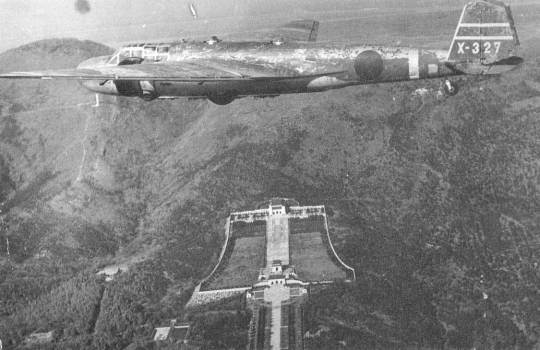
Bombardier Mitsubishi G3M Type 96 du Kisarazu Air Group au-dessus du Mausolée de Sun Yat-sen – Guerre sino-japonaise – Nankin – Chine – 1938
#WWII#guerre sino-japonaise#sino-japanese war#seconde guerre sino-japanaise#second sino-japanese war#marine impériale japonaise#imperial japanese navy#ijnas#imperial japanese navy air service#aviation militaire#military aviation#bombardier#bomber#bombardier moyen#medium bomber#mitsubishi g3m#mausolée de sun yat-sen#sun yat-sen mausoleum#nankin#nanjing#chine#china#1938
10 notes
·
View notes
Text
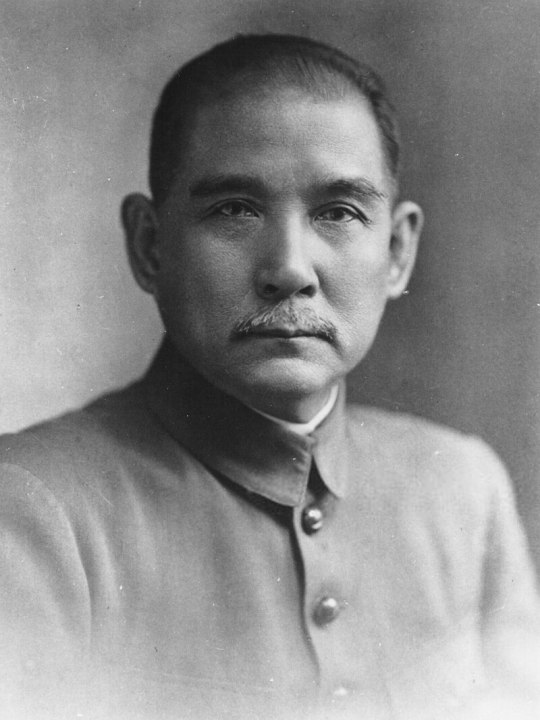
1925 – Sun Yat-sen, Chinese physician and politician, 1st President of the Republic of China (b. 1866)
5 notes
·
View notes
Text
Guys I got into an argument w a kid in class and I feel kinda bad for disrupting ppl but I really couldn’t shut up bc this kid started with “colonized nations want to structure themselves to be like their colonizers” and progressed to “China is the most racist country and has concentration camps and don’t you trust the UN?” To “americas police brutality is an issue of power not of race” and it was so bad
#thinkin thots#how do u think like this#in a class abt African nationalism#we were talking abt readings from sun yat sen and Ho Chi Minh n stuff#for context I guess#anyways#I feel bad but the kid was worse so
6 notes
·
View notes
Text
“ Per Pechino Taiwan è cinese dal 1683, quando fu conquistata dalla dinastia Qing, che però non ne fece una priorità. Assegnata come prefettura alla provincia del Fujian (Fokien), ivi integrata nel 1887, otto anni prima della cessione al Giappone (1895-1945), prima dell’arroccamento nell’isola e nei suoi arcipelaghi dei nazionalisti del Guomindang sconfitti da Mao nel 1949. Quanto basta a battezzarla recuperanda dalla Repubblica Popolare Cinese, cui non è mai appartenuta.
Pechino legittima tale pretesa con la continuità pentamillenaria della Cina, indipendentemente dalle dinastie o dai regimi al potere. Altra invenzione recente, distillata dalla propaganda della Prima Repubblica di Cina fondata nel 1911 da Sun Yat-sen. E ripresa entro diversa costellazione ideologica nella Cina di Mao subito dopo la morte del suo fondatore, che pretendeva di aver inaugurato la Nuova Cina. Oggi Xi Jinping insiste sui cinquemila anni di ininterrotta continuità del Drago. Vale la pena riportarne lo scambio di battute con Donald Trump nella Città Proibita di Pechino. È l’11 agosto 2017.
Trump: “La Cina può tracciare la sua storia fino a cinquemila anni fa”.
Xi: “La Cina ha una storia documentata di più di tremila anni”.
Trump: “Credo che la cultura più antica, si dice, sia l’Egitto, con ottomila anni”.
Xi: “Sì, l’Egitto è un poco più antico della Cina. Ma la civiltà cinese è una durevole cultura unica al mondo tramandata costantemente attraverso le generazioni”.
Trump: “Dunque questa è la vostra originaria forma di cultura”.
Xi: “Sì. La gente come noi può essere ritrovata fino a cinquemila anni fa. Abbiamo gli stessi capelli neri e la stessa pelle gialla. Noi ci chiamiamo i discenti del Drago”.
Trump: “Grande!”. *
È notevole come i capi di due imperi rivali trovino un linguaggio comune sulla profondità delle radici storiche che distingue le grandi civiltà. In questo ovviamente l’America non può competere, sicché l’apertura di gioco di Trump è da intendersi come atto di cortesia, subito avvelenato dall’evocazione dell’anzianità (esagerata) dell’Egitto. Eco a quattro decenni di distanza dell’altrettanto significativa battuta con cui il primo ministro Zhou Enlai si rivolse a Kissinger, inaugurando il primo “disgelo” sino-americano, per cui l’America era più antica della Cina perché aveva due secoli di storia contro i ventitré anni della Repubblica Popolare. Altra epoca, quando al regime di Mao interessava marcare la rottura con il passato imperiale e poi nazionalista, sicché il battesimo della “Nuova Cina”, nel 1949, s’ergeva a ora zero. “
* La conversazione fra Xi Jinping e Trump è ripresa in diretta l’11 agosto 2017 dalla televisione di Stato cinese Cgtn (China Global Television Network) strumento di influenza rivolto al resto del mondo. Cfr. https://news.cgtn.com/news/3267444f34597a6333566d54/share_p.html
---------
Lucio Caracciolo, La pace è finita. Così ricomincia la storia in Europa, Feltrinelli (collana Varia), novembre 2022. [Libro elettronico]
NOTA: il testo contiene un refuso, la data della visita del presidente Trump alla Città Proibita non risale all’11 agosto (11/8) ma all’8 novembre (8/11) del 2017.
#letture#scritti saggistici#saggistica#saggi brevi#geopolitica#Lucio Caracciolo#leggere#citazioni#Donald Trump#Cina#Repubblica Popolare Cinese#Xi Jinping#Taiwan#nazionalismo#relazioni internazionali#Pechino#Mao Zedong#Mao Tse-tung#La pace è finita#Sun Yat-sen#Città Proibita#tradizioni#libri#Stati Uniti d'America#grandi civiltà#Zhou Enlai#civiltà cinese#imperialismo americano#antico Egitto#storia
6 notes
·
View notes
Text
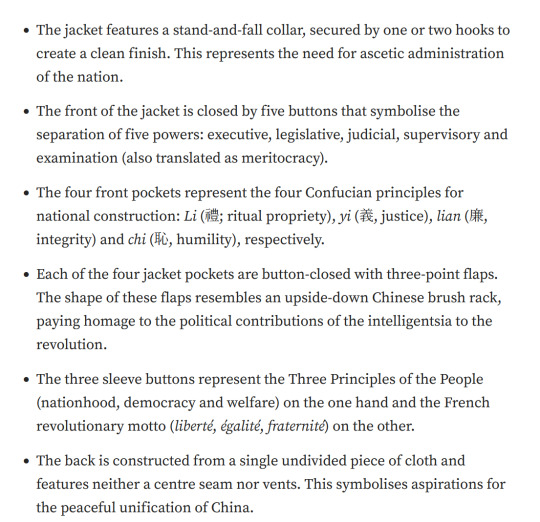
the zhongshan suit having been made with political symbolism is maybe the most maoist thing i´ve ever heard?
5 notes
·
View notes
Text
Baby Bang Becomes (The Tsuchikage)
Summary:
The winds of change are blowing.
(For everyone.)
Deidara's story.
Takes place between 1836 and 1934.
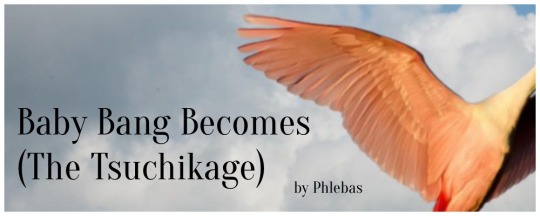
Rating: Mature
Fandom: Naruto
Relationship: Gen
Word Count: Approximately 15,500 (Complete and posts one chapter daily)
This story is for @dominaaurum who inspired this story by telling me about how Ōnoki wanted Deidara to be his successor and how Kurotsuchi called him Deidara-nii in the anime.
It is also for @nonnie992 and @silverutahraptor who kindly helped me with a German word, @carnivorousmossbeast who suggested how the German sailors would act, and @dawen who encouraged me to add more snark.
Thank you, all of you!
Ishikawa limps into the house, dragging his bad leg over the tatami.
It bothers him, of course it does, but a year of healing has brought acceptance. It will never be better than this, his injuries were too severe, and the way his hip was crushed under the inhumanly strong blows of those white monstrosities means that he will never be fit for combat again.
Oh, he can fly, of course he can, but that's a drain on his chakra and foolish to contemplate in a serious battle.
Indeed it's only because of the Iryō ninjutsu practised by Hashirama-dono that he can walk at all.
Now it is simply something that he will have to live with.
As he will have to live with all of his other losses.
Read the rest on AO3.
#Phlebas Writes#Naruto#fanfiction#Story: Baby Bang Becomes (The Tsuchikage)#Series: Courting Culture Confusion#Gen#Ishikawa (Naruto)#Ōnoki (Naruto)#Deidara (Naruto)#Sun Yat-sen (Historical RPF)#Momochi Zabuza#Maito Gai#Rasa (Naruto)#Darui (Naruto)#Kurotsuchi (Naruto)#Hōzuki Suigetsu#Hōzuki Mangetsu#Karl von Müller (Historical RPF)#Uchiha Yashiro#Yamanaka Inoichi#Baki (Naruto)#C (Naruto)#Kozuchi (Naruto)#okay to reblog
20 notes
·
View notes
Text
1981-Soong Ching-ling






Rosamond Soong Ch'ing-ling (27 January 1893 – 29 May 1981) was a Chinese political figure. As the third wife of Sun Yat-sen, then Premier of the Kuomintang and President of the Republic of China, she was often referred to as Madame Sun Yat-sen.
3 notes
·
View notes